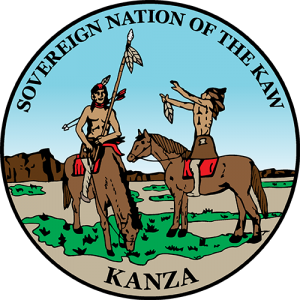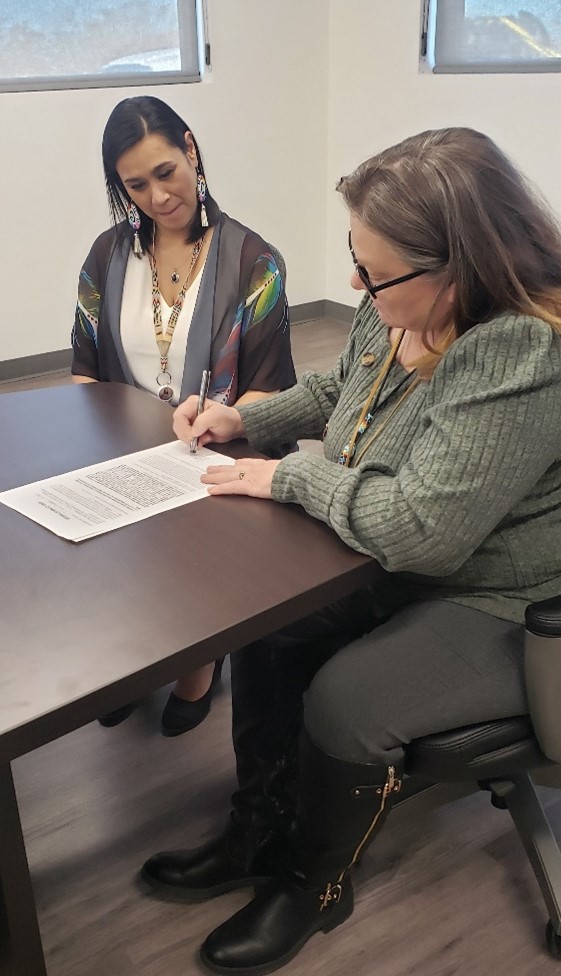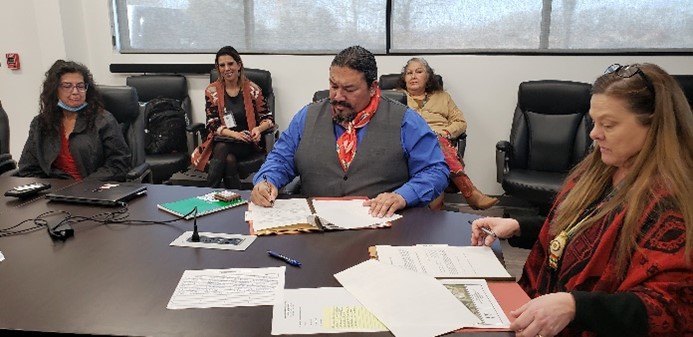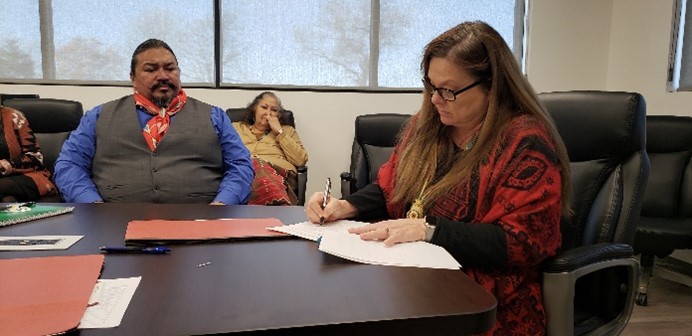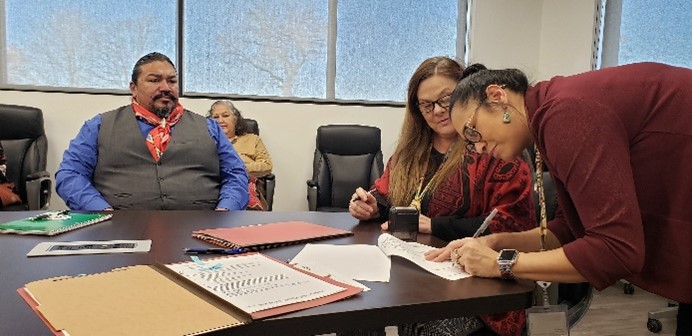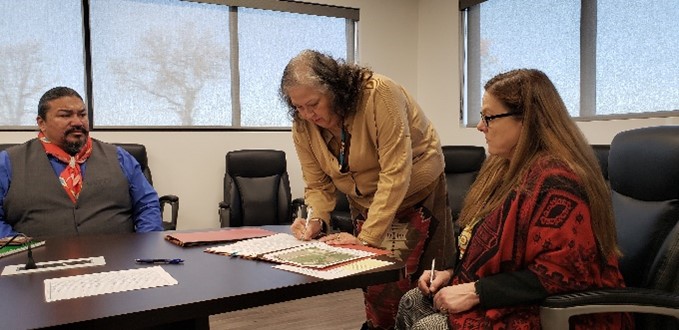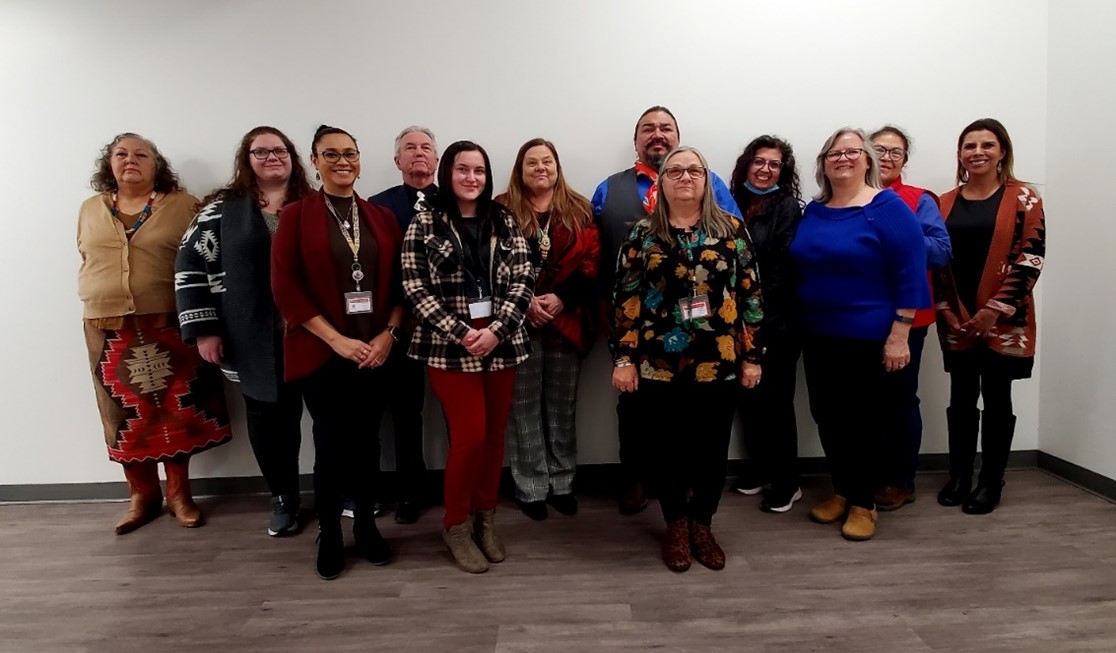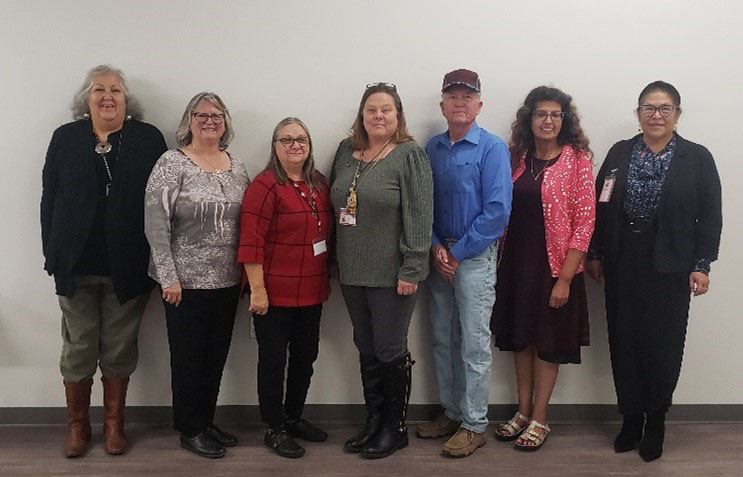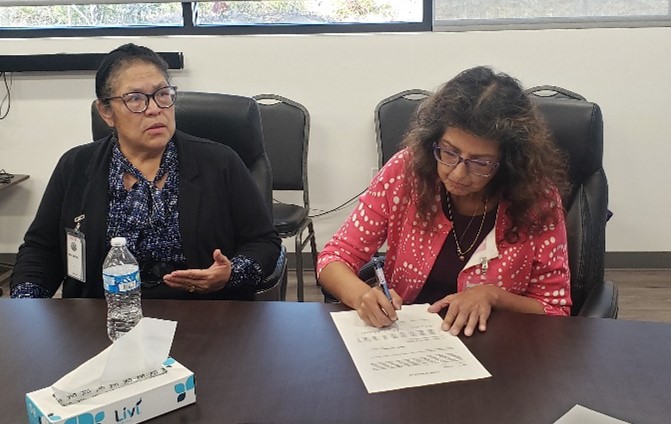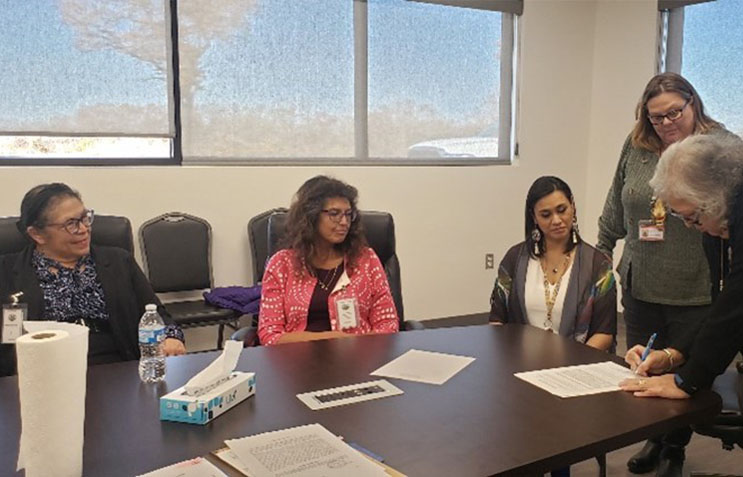Hawé! Zaházhe wita che Cheryl Craig. I am your Self-Governance/Trust Director.
I thought it would be interesting to discover Self-Governance. Did you know that Kaw Nation is a Self-Governance (SG) Tribe? Have you ever wondered what that really means? Before I began working with Kaw Nation, I had little knowledge of what that meant. I will begin with a very brief history of how SG began.
Traditional tribal existence and economies were destroyed by the conquest of foreign nations. The past termination policies of the United States almost reduced tribal populations to extinction. Centuries old ways of life were destroyed, families were torn apart, native languages and religions were forbidden. Tribes were forced to move from their homelands and start their lives over in distant regions of the U.S. Treaties diminish tribal land bases and vital natural resources in return for services and benefits.
To uphold those treaty obligations the U.S. government “managed” the affairs of tribal nations for many years. It proved to be detrimental to the native tribes; there was corruption, mismanagement, and theft. Tribal leaders were distraught by the plight forced upon their people. This brought about the Self-Governance movement. Many Tribal leaders believed there was a better way of doing things. They believed they could do more with the funding allocated for their tribe than the federal government.
In 1975 Congress implemented Public Law 93-638 the Indian Self Determination and Education Assistance Act (ISDEAA). This created tremendous opportunities for tribal governments to access resources/funding to provide services to their people at the tribal level, instead of the government providing those services. Tribes that chose to enter SG were able to establish official tribal offices where they once may have been operating out of their homes and/or rental offices/buildings. The funding came to tribes through contracts.
While amendments to P.L. 93-638 were pending, in 1987 an article in the Arizona Republic Newspaper called “Fraud in Indian Country” alleged that there was waste and mismanagement within the federal bureaucracy. The Federal Department of the Interior (DOI) proposed that Indian program appropriated funds could be given to Tribes to manage.
In 1988 the P.L 100-472 “Indian Self-Determination Amendments of 1987” was implemented. Tribal SG Demonstration Project, Title III (a 5-year pilot project) gave tribes the opportunity to govern themselves. The Self-Governance Communication and Education Office (SGCE) was formulated in 1989.
The SG Demonstration Projects began with the Bureau of Indian Affairs (BIA) in 1990 and with Indian Health Service (IHS) in 1992. They became permanent under Public Law 103-431 “Indian Self-Determination Act Amendments of 1994”.
The SG permanent legislation “Title IV” for DOI came in 1994 and “Title V” in 2000 for IHS. As tribes choose to enter Self-Governance the trust responsibility of the U.S.A. is never diminished. The United State continues to be under treaty obligations to provide services and benefits to tribal nations.
Self-Governance gives the tribe control and authority to redesign programs using their federal funding to tailor programs and services for their specific tribal needs. With Self-Governance, Tribes take the responsibility of design, management, and delivery of their programs from the federal government. They alone are responsible for their programs and must answer to their tribal members.
During the 1990s under the leadership of Chairwoman Wanda Stone and the Executive Council, Kaw Nation became Self-Governance within IHS in 1995 and within BIA in 1996.
Pictured below on January 9, 2023: Chair Kimberly Jenkins, Tribal Council Members Robert Allen, Cheri Dunn, Little Carol Clark, SG/Trust Director Cheryl Craig, Executive Secretary Ida Williams, KNED Director Emily Douglas, Mikayla Spears Tribal Employee/Member, BIA Acting Regional Director Gabe Morgan, BIA Realty Staff Katherine Stevens, Julie Anderson, and Jennifer Hill.
What’s Trust All About?
Self-Governance has afforded Kaw Nation the opportunity to take over the Realty Program functions within BIA. This includes Leasing on tribal trust land and Fee-to-Trust.
Did you know that Kaw Nation has its own HEARTH/Leasing Act? Kaw Nation’s Indian Land Leasing Act of 2013 was adopted by the Kaw Nation Tribal Council on October 19, 2013.The Secretary of Indian Affairs signed and approved Kaw’s Leasing act on December 13, 2013. The Leasing Act gives Kaw Nation control over Business and Wind Leases on tribal trust land. The tribe no longer has to gain leasing approval for these type leases on their trust properties through the BIA.
Kaw Nation also develops and submits their own Fee-to-trust applications. Fee-to-Trust is a process in which tribes have the opportunity to convert their fee land to property held in trust for the benefit of the tribe by the United States of America. It is a very laborious process and can take several years to obtain approval. Placing land in trust is also required for Indian Gaming in Oklahoma. This is why gaming is permitted through the Office of Indian Gaming (OIG) for Kaw Nation’s Rock and Brews Casino Braman.
You may ask yourself, what is the benefit of converting fee land to trust? Having tribal land held in trust eliminates the property from being under the jurisdiction of states and local governments. Land being under the jurisdiction of Kaw Nation means sovereignty, the tribe can exercise governmental control over their land.Tribal trust promotes self-sufficiency, preserves, and protects land and resources, reestablishes and/or expands the tribal trust land base, promotes social and economic development.
Currently, Kaw Nation owns 1,317.76 acres in trust status; plus 167 acres in joint trust ownership of the Chilocco Campus. The most recent properties put in trust in 2023 are Kaw Nation’s Battle & Lucas Properties near Braman and Furguson Property near Kaw City.
Two deed signing ceremonies were held during 2023. The first was held on January 9, 2023, for the Battle & Furguson properties and the second was held for the Lucas property on December 7, 2023. Representatives attended from both Kaw Nation & BIA.
Wíblaha,
-Cheryl Craig
Pictured below on December 7, 2023: Chair Kimberly Jenkins, Tribal Council Members Robert Allen, Cheri Dunn, Little Carol Clark, SG/Trust Director Cheryl Craig, Executive Secretary Ida Williams, BIA Acting Regional Director Julie Anderson, and BIA Realty Staff Jennifer Hill.
